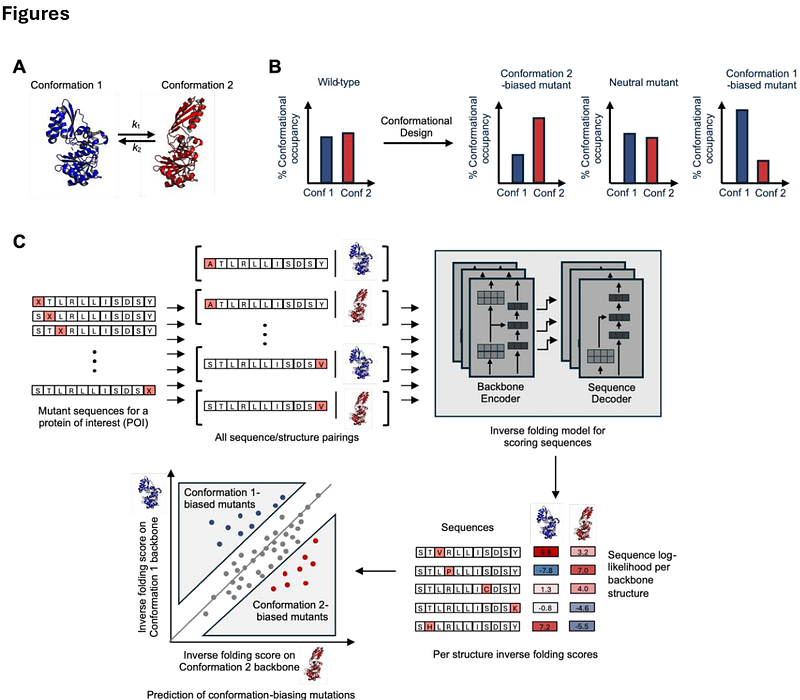Computational design of conformation-biasing mutations to alter protein functions

Computational design of conformation-biasing mutations to alter protein functions
Cavanaugh, P.; Xue, A.; Dai, S.; Qiang, A.; Matsui, T.; Ting, A. Y.
AbstractNearly all proteins undergo conformational changes to perform their biological functions. Intentional manipulation of conformational occupancy could produce novel or altered protein functions. We developed Conformational Biasing (CB), a streamlined computational workflow that utilizes an inverse folding model to predict mutations that bias proteins toward desired conformational states. By applying CB to diverse deep mutational scanning datasets, we could predict mutations which, through their conformational effects, enhance K-Ras effector binding, increase SARS-CoV-2 spike protein interactions with ACE-2, and improve activation of the Beta adrenergic receptor. Additionally, CB predicted activity-increasing and -decreasing mutations for the conformationally-gated enzymes Src, B-Raf, MurA, and FabZ. We then used CB to design novel variants of E. coli lipoic acid ligase (LplA) biased toward \'open\' or \'closed\' adenylate ester-bound conformations, which were characterized through tryptophan fluorescence and small angle X-ray scattering measurements. Closed-biased LplA variants exhibited greater sequence-specificity than wild-type, enabling targeted fluorophore labeling of proteins in living cells, while open-based LplA variants were far more promiscuous, enabling proximity-dependent proteome tagging in cells. Due to its straightforward and rapid implementation (https://github.com/alicetinglab/ConformationalBiasing/), CB should be a versatile tool for engineering conformational bias into a wide range of proteins, resulting in altered or novel functions with utility for basic science, biotechnology, or medicine.